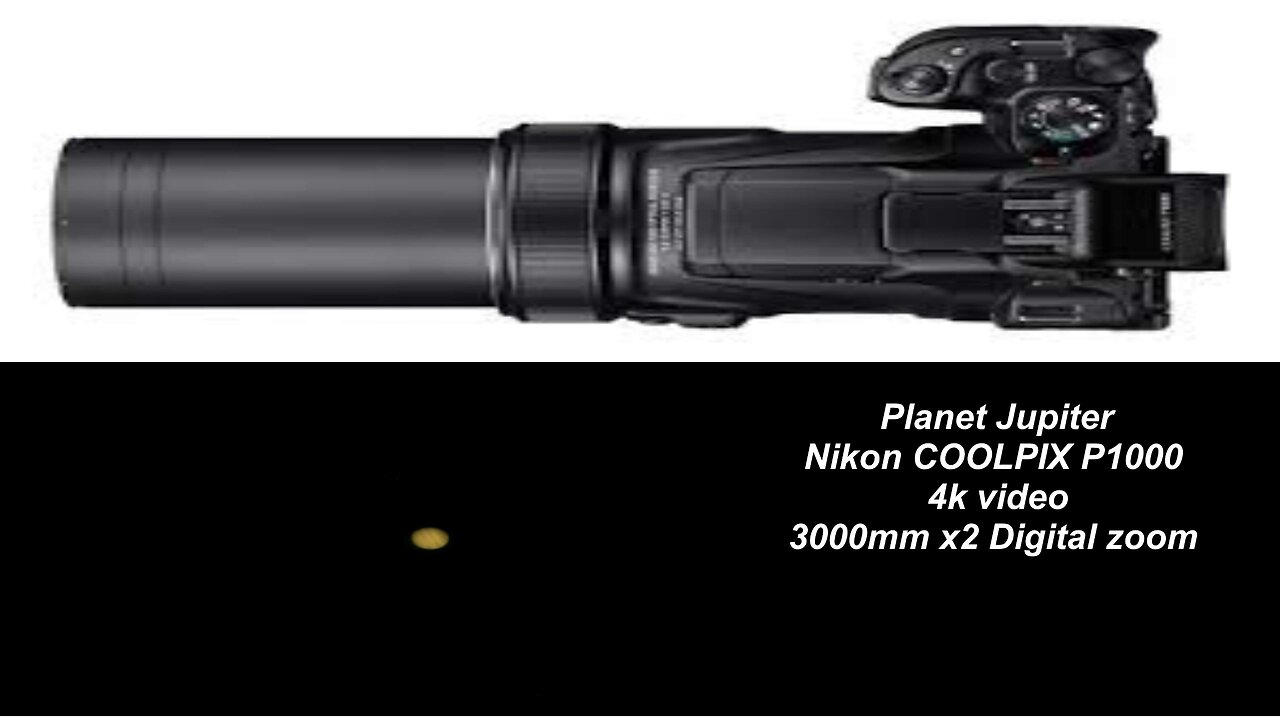Premium Only Content

Planet Jupiter Nikon P1000 4k 3000mm x2 Digital zoom
Jupiter is the fifth planet from the Sun and the largest in the Solar System. It is a gas giant with a mass more than two and a half times that of all the other planets in the Solar System combined, but slightly less than one-thousandth the mass of the Sun. Jupiter is the third brightest natural object in the Earth's night sky after the Moon and Venus, and it has been observed since prehistoric times. It was named after the Roman god Jupiter, the king of the gods.
Jupiter is primarily composed of hydrogen, but helium constitutes one-quarter of its mass and one-tenth of its volume. It probably has a rocky core of heavier elements, but, like the other giant planets in the Solar System, it lacks a well-defined solid surface. The ongoing contraction of Jupiter's interior generates more heat than it receives from the Sun. Because of its rapid rotation, the planet's shape is an oblate spheroid: it has a slight but noticeable bulge around the equator. The outer atmosphere is divided into a series of latitudinal bands, with turbulence and storms along their interacting boundaries. A prominent result of this is the Great Red Spot, a giant storm which has been observed since at least 1831.
Type Compact digital camera
16.0 effective megapixels (image processing may reduce the number of effective pixels)
Image sensor 1/2.3-inch type CMOS Total pixels: Approx. 16.79 million pixels
Lens NIKKOR lens with 125x optical zoom
Focal length 4.3 to 539 mm (angle of view equivalent to that of 24 to 3000 mm lens in 35mm [135] format)
Maximum aperture f/ 2.8 to 8
Construction: 17 elements in 12 groups (5 ED lens elements and 1 Super ED lens element)
Digital zoom magnification, up to 4x (angle of view equivalent to that of a 12000 mm lens in 35mm [135] format), up to 3.6x when recording movies in 2160/30p (4K UHD) or 2160/25p. (4K UHD)
-
 16:25
16:25
TSPLY
1 day agoNew CNN / MSNBC Meltdown Moments Of Getting Mad At Donald Trump In February
18.7K9 -
 8:33
8:33
scoutthedoggie
4 hours agoAirsoft War Games Scotland
12.8K3 -
 4:56
4:56
Kirill MultitoolOfficial
1 day ago $1.81 earnedSurvival TIPS and usefull bushcraft DIY in the wild
33.5K3 -
 27:25
27:25
ArturRehi
1 day agoThis is How Dictatorships are Formed
17.5K4 -
 59:35
59:35
AlaskanBallistics
17 hours ago $0.45 earnedI Love this Gun Episode # 11
12.2K1 -
 1:21:01
1:21:01
BibleUnbound
19 hours agoThe Complete Story of Moses: The Man of God
18K4 -
 15:56
15:56
Chris From The 740
7 hours ago $0.01 earnedFenix LR36R Review: The Most Powerful Light I've Ever Tested!
10.5K1 -
 1:01:47
1:01:47
Wendy Bell Radio
9 hours agoPet Talk With The Pet Doc
18.1K6 -
 2:23:45
2:23:45
Game On!
19 hours ago $10.27 earnedTom Brady approves of President Trump calling out Governors wanting men in women's sports!
52.7K8 -
 5:34
5:34
BIG NEM
17 hours agoFrom Atheist to Seeing Auras: My Unlikely Spiritual Awakening 🤯
5.01K1